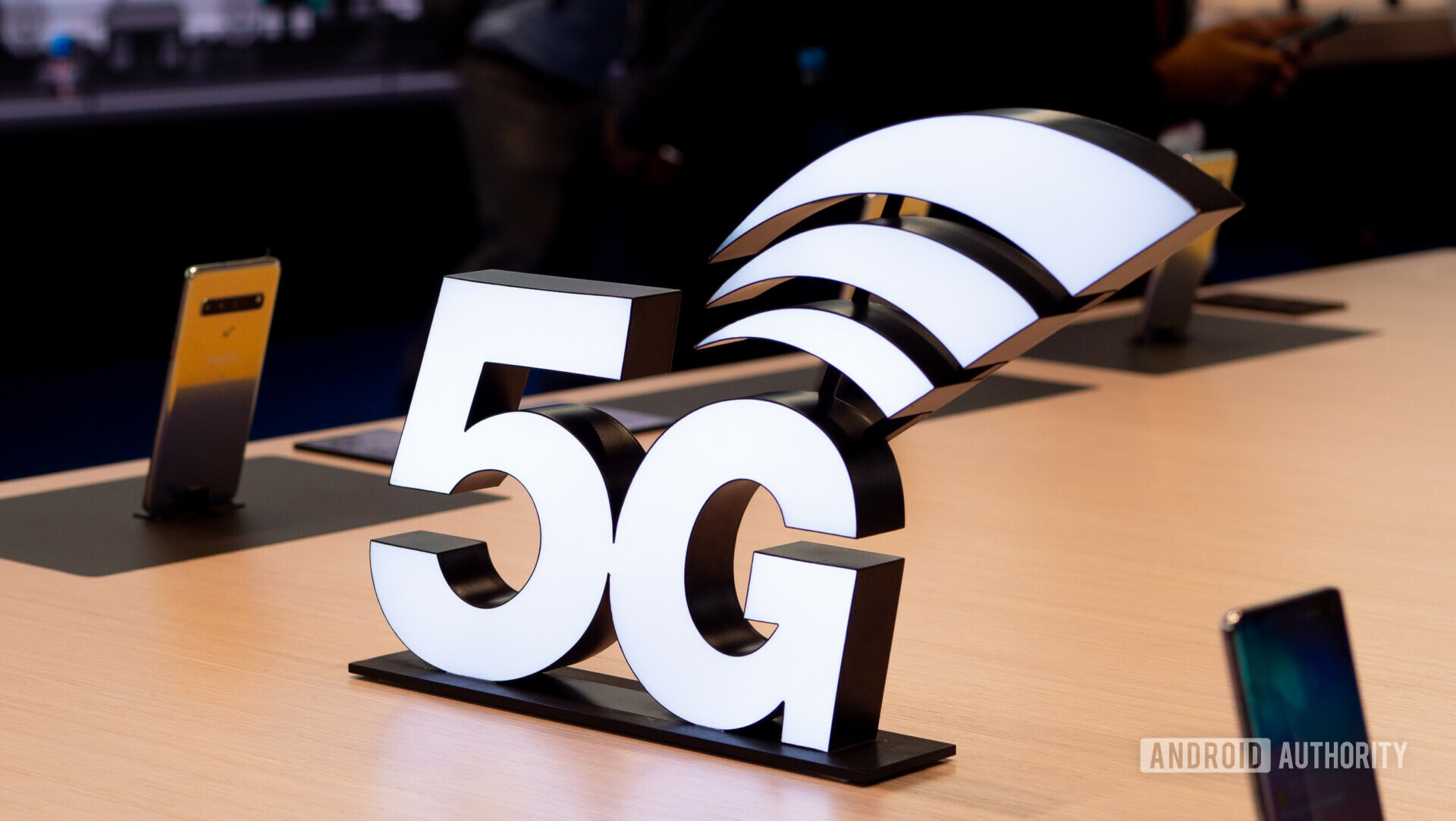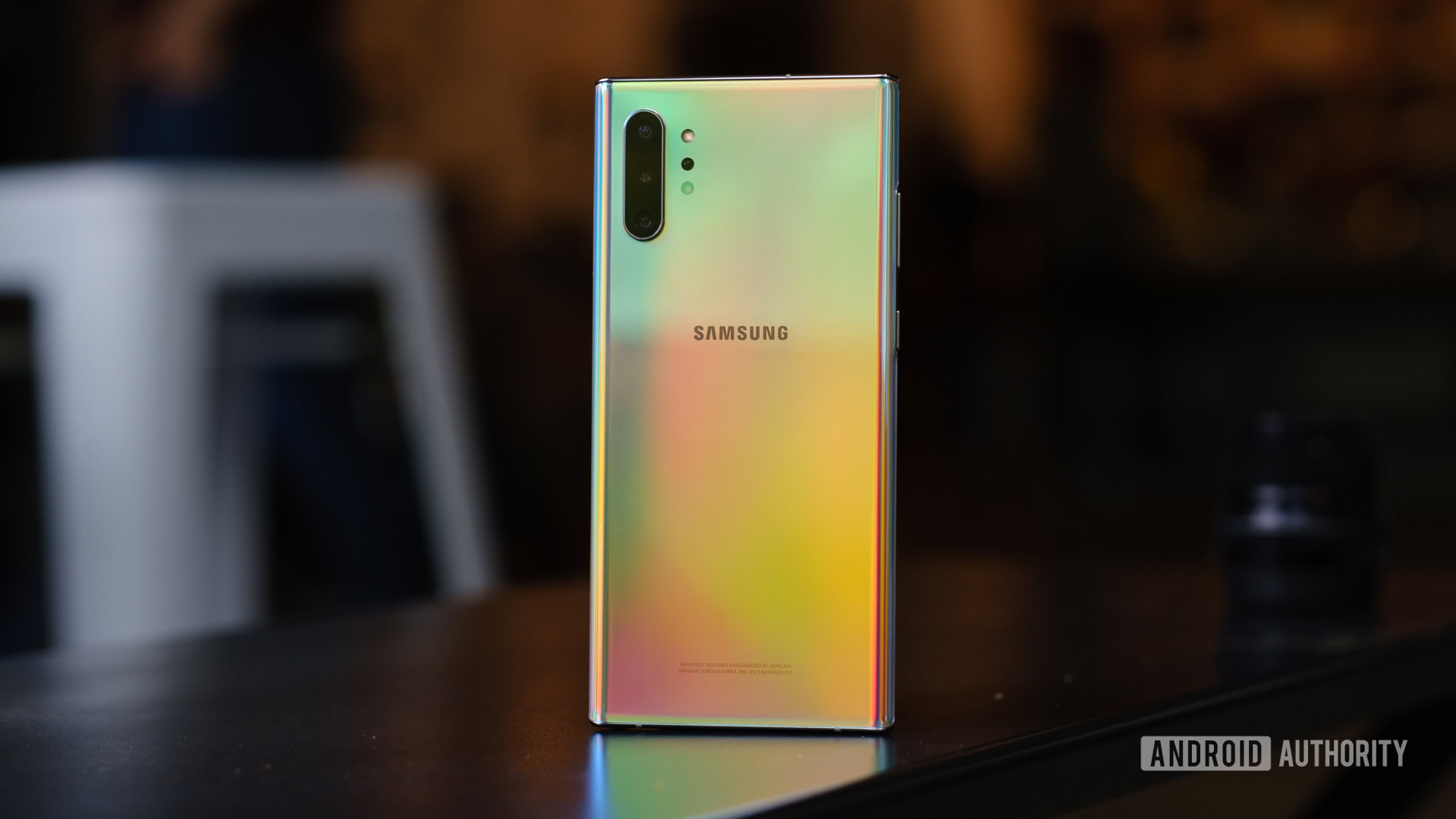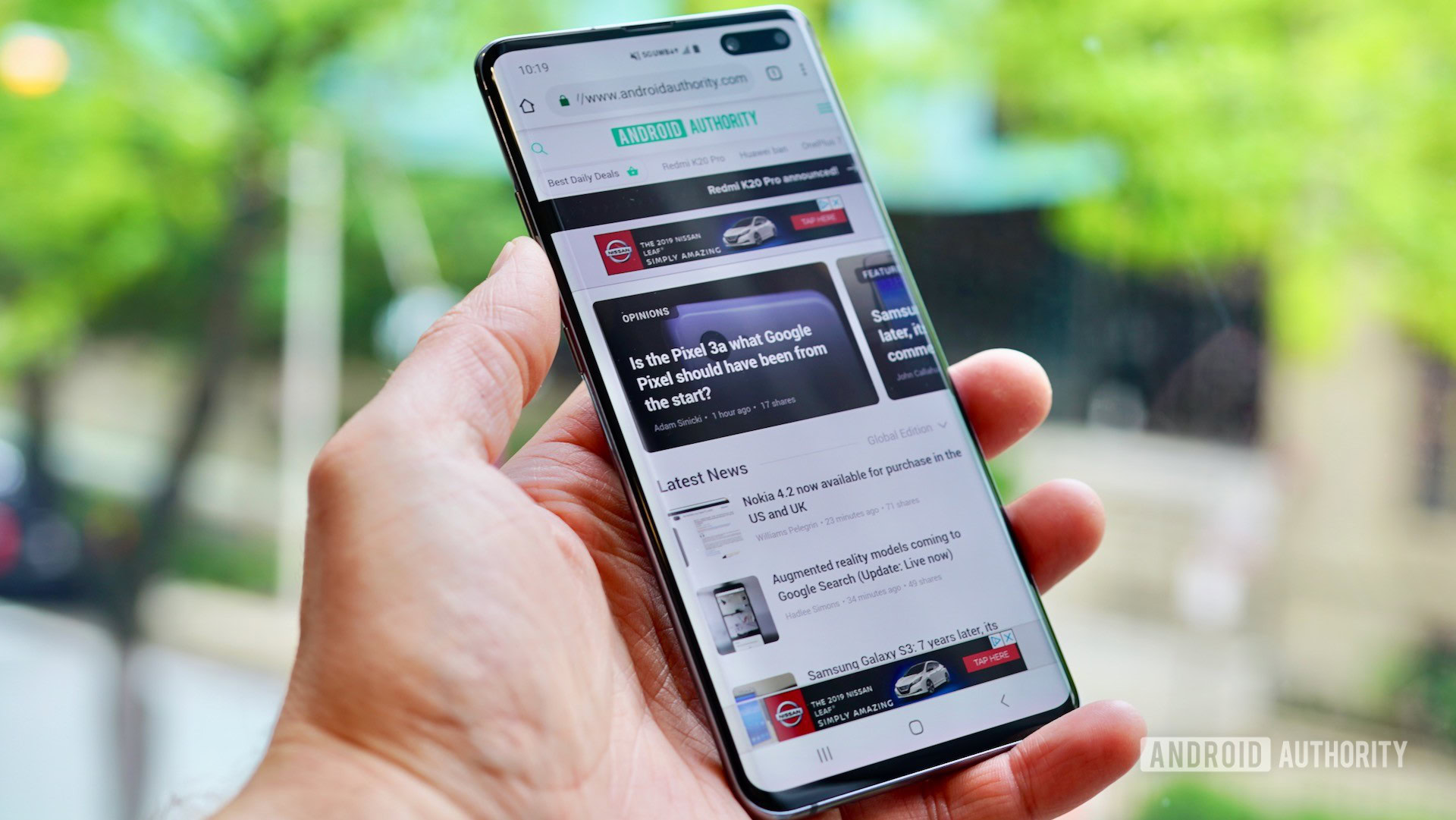Affiliate links on Android Authority may earn us a commission. Learn more.
AT&T adds 20 new 5G US cities, bringing nationwide total to 100 markets

Update, March 17, 2020 (1:01 PM ET): AT&T has added 20 more 5G cities to its network. The carrier now offers 5G access to 100 markets across the US. We’ve updated our list of cities below.
Original article, November 22, 2019 (1:01 AM ET): AT&T 5G is finally here. The company today said it will soon join its three main competitors in offering 5G wireless service to consumers. AT&T has provided 5G to businesses for some time, but will make the faster network technology available to consumers at no extra charge over the next few weeks. The launch is nuanced in terms of where 5G will launch, what type of 5G technology will be used, and what devices can access 5G.
Android Authority has all the details you need to know about AT&T 5G and how it compares with Sprint, T-Mobile, and Verizon Wireless.
5G E, 5G, 5G Plus what?

AT&T is not making it easy for consumers to understand what type of service they have access to. The company continues to refer to its 4G LTE-Advanced network as ‘5G E.’ These service areas, which are fairly large at this point, provide fast LTE service to compatible devices and will provide fall-back service to 5G-compatible devices where real 5G isn’t available.
The company is using the term 5G to describe its sub-6GHz network, which is what it’s launching next month for consumers. Sub-6GHz is sometimes referred to as mid-band (although AT&T calls its service low-band). AT&T says its sub-6GHz 5G service will reach about two miles from cell towers and is good for rural, suburban, and urban areas — essentially what we’re used to with today’s 4G networks. Sprint’s 5G network is deployed on mid-band/sub-6GHz spectrum as well.
AT&T is leaning on the term 5G Plus to refer to its mmWave service. AT&T’s mmWave 5G has a range of about 1,000 feet from the cell tower. The company doesn’t say that line-of-sight is required for a connection, but that’s been our experience as we’ve tested other mmWave-based 5G networks, such as that of Verizon Wireless. The mmWave service will be reserved for areas where a lot of capacity is needed, such as inner city areas, stadiums and arenas, universities and colleges, and shopping centers like your local mall. mmWave is great for capacity and speed.
For the time being, AT&T expects consumers to rely mostly on its sub-6GHz service while businesses stick with the mmWave service they’ve been using for the past year.
Rapid-fire expansion
AT&T now has 5G service in the following cities
- AL: Birmingham, Huntsville
- AZ: Gila
- CA: Bakersfield, Los Angeles, Madera County, Modesto, Mono County, Obispo, Oxnard, Santa Barbara, San Diego, San Francisco, San Jose, San Luis, Santa Cruz, Santa Rosa, Vallejo
- CO: Denver
- CT: Bridgeport, Hartford, New Haven
- DC: Washington
- DE: Kent County, Wilmington
- GA: Albany, Athens, Chattooga County, Hancock County, Liberty, Macon, Whitfield County, Worth
- IL: Washington County
- IN: Brown County, Indianapolis
- KS: Topeka, Wichita
- KY: Lexington-Fayette, Louisville
- MA: Boston, New Bedford, Worcester
- MD: Baltimore, Frederick
- MI: Detroit, Kalamazoo, Newaygo
- MO: Kansas City, Springfield, St. Louis
- MT: Beaverhead County, Lincoln County
- NJ: Atlantic City, Hunterdon County, Long Branch, New Brunswick, Ocean County, Sussex County, Trenton
- NM: Las Cruces
- NV: Las Vegas, Reno, Storey County
- NY: Albany, Binghamton, Buffalo, New York, Orange County, Otsego County, Rochester, Syracuse, Utica-Rome
- OH: Cincinnati, Columbus, Dayton, Hamilton, Hancock County, Ross County, Sandusky County, Springfield, Tuscarawas County
- OR: Portland, Salem
- PA: Allentown, Harrisburg, Lancaster, North East, Philadelphia, Pittsburgh, Reading, State College, York
- RI: Providence
- UT: Provo
- VA: Madison County
- WI: Milwaukee
- WA: Spokane
- WV: Raleigh County
AT&T confirmed that it is on track to offer nationwide 5G by mid-2020.
AT&T is providing one thing at launch that its main competitor, Verizon Wireless, did not: Maps. AT&T is publishing coverage maps for its 5G service in the launch markets so customers will know where they can expect to access 5G. Sort of.
The maps look really robust, with entire metropolitan areas covered almost completely with 5G. When asked, AT&T said the specific level of coverage depicted on the maps may not actually be available until February 202o — even for the initial markets. In other words, its maps don’t provide the current level of coverage and instead offer a look at future coverage. Good luck finding a signal.
AT&T has also launched its 5G Plus mmWave service in the following cities:
- AZ: Phoenix
- CA: Los Angeles, Menlo Park, Oakland, Redwood City, San Bruno, San Diego, San Francisco, San Jose, West Hollywood
- FL: Jacksonville, Miami, Miami Gardens, Orlando
- GA: Atlanta
- IN: Indianapolis
- KY: Louisville
- LA: New Orleans
- MD: Baltimore, Ocean City
- MI: Detroit
- NC: Charlotte, Raleigh
- NV: Las Vegas
- NY: New York City
- OH: Cleveland
- OK: Oklahoma City
- PA: King of Prussia, Philadelphia
- TN: Nashville
- TX: Austin, Dallas, Houston, San Antonio, Waco
AT&T claims 5G will be available to “tens of millions of people” with its nationwide 5G coverage (Psst, the US has 327 million people, what about the rest?).
Let’s talk hardware

AT&T has a few 5G-compatible offerings so far, all of which come from Samsung: the Galaxy Note 10 Plus 5G, Galaxy S20, Galaxy S20 Plus, and Galaxy S20 Ultra.
Samsung announced the Galaxy S20 series in February 2020. The South Korean company released all three variants on all major US carriers.
The Galaxy S20 Ultra is the most premium handset in the lineup. It has a massive 6.9-inch display, a whopping 5,000mAh battery, either 12 or 16GB of RAM, and 128 or 512GB of storage.
Samsung’s Galaxy S20 Plus may not be as premium as the Ultra variant, but it’s the one we recommend the most. It has a slightly smaller 6.7-inch display, a 4,500mAh battery, 12GB of RAM, and 128 or 512GB of storage.
The standard Galaxy S20 is the least impressive of the bunch, though it still holds its own. This device comes with a 6.2-inch display, a 4,000mAh battery, 12GB of RAM, and 128GB of storage.
Related: Samsung Galaxy S20 series vs the competition: Which one is better on paper?
Though it’s not as new as the Galaxy S20 series, the Note 10 Plus 5G is still a killer phone. Other than the 5G radio (Snapdragon X55 modem), the 5G Note 10 Plus is identical to the version that’s been for sale since August 2019. The Galaxy Note 10 Plus features a 6.8-inch screen, Snapdragon 855 processor, 256GB of storage, a triple-camera arrangement on the back, and of course the S Pen.
AT&T’s 5G business customers have access to a mobile hotspot and the Samsung Galaxy S10 5G. We also expect to see AT&T add the 5G-capable LG V60 ThinQ (our review) to its line up March 20.

Right now, this is in line with the offerings from Sprint, T-Mobile, and Verizon Wireless. Sprint has two 5G phones, the LG V50 ThinQ and the OnePlus 7 Pro 5G, while T-Mobile and Verizon both offer the Samsung Galaxy S10 5G. We can expect to see a wave of 5G products announced in January during CES and February during MWC.
How much for those super fast AT&T 5G bits?
Customers who subscribe to AT&T’s Unlimited Extra or Unlimited Elite plans will be given access to 5G at no extra cost. These two plans carry price tags of $75 and $85 per month, respectively, for a single line. Adding more Unlimited lines, and signing up for auto-pay and paperless billing will result in some savings depending on how many extra lines are added.
These numbers are in line with what AT&T’s competitors are charging.
Now that all four major carriers in the US have 5G on the table, the real fun begins. It will be interesting to watch the carriers’ coverage, speeds, and device rosters grow over the next six months.
What do you think, are you excited for AT&T 5G? Be sure to let us know in the comments below!